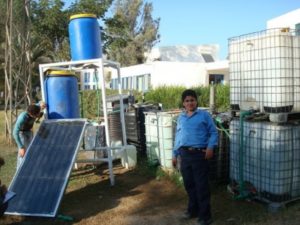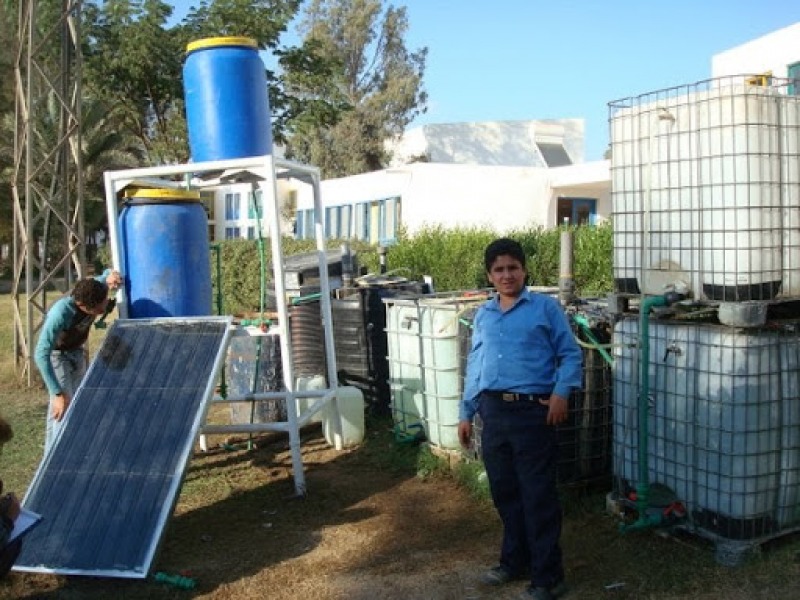
Students from the Sekem science program inspect the Solar CITIES solar heated IBC biogas system that they helped build
May 12, 2009
At the Sekem Farm and Science School outside of Cairo, Egypt Thomas Culhane, Hanna Fathy and Solar CITIES intern Mike Rimoin deployed their invention of the open-source solar heated three IBC Solar CITIES biodigester. This is perhaps the first use of International Bulk Containers (IBCs) for biogas in the world. Culhane felt it necessary to build a biogas system out of IBCs because he had just won a National Geographic Emerging Explorer’s Blackstone Ranch Innovation Challenge Grant with Dr. Katey Walter Anthony from the University of Fairbanks in Alaska and had to come up with a small scale biogas system that would work in cold weather conditions. The open ARTI India systems they had been building in Cairo wouldn’t work outside in the cold because they would lose heat too quickly. They would also not work indoors because they would create odors and release methane. Meanwhile, typical cylindrical water tanks were either unavailable in Alaska or far too expensive to be feasible.
Culhane and Fathy passed discarded IBCs on the roadside in Cairo and wondered if they could make effective digesters. With a little bit of research, Culhane found that they could be found in almost every country in the world. They are, after all, international bulk containers.
The problem they faced was that unlike the ARTI design, which uses a telescoping tank to hold the gas, the IBC has no storage possibility. Culhane came up with the idea of using three IBCs—one as digester, one to hold the gas, and one to create displacement water pressure to force the gas to the kitchen or generator.
It ended up being easier to produce the gas in an IBC but store it in a typical ARTI. Another option is to use the IBC as the digester and store the gas in a large PVC bag and use a pump to create pressure. But for situations where IBCs are the ONLY tanks available and there are no bags or gas pumps, the the IBC system works rather well.
Culhane, Fathy, and Rimoin tried three different variants of the system. One was a traditional ARTI system with black plastic irrigation pipe surrounding it connected to a solar hot water system. The hot water system is also made with black plastic irrigation pipe as heat exchanger rather than copper. The second was an IBC connected to an ARTI. The third was the three IBC system for places like Alaska where cylindrical water tanks for gas collection are not an option.
Based on these experiments, Solar CITIES demonstrates different options for digesters for different environmental conditions around the world.

